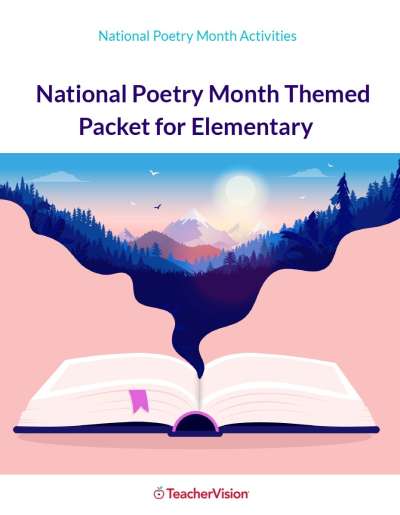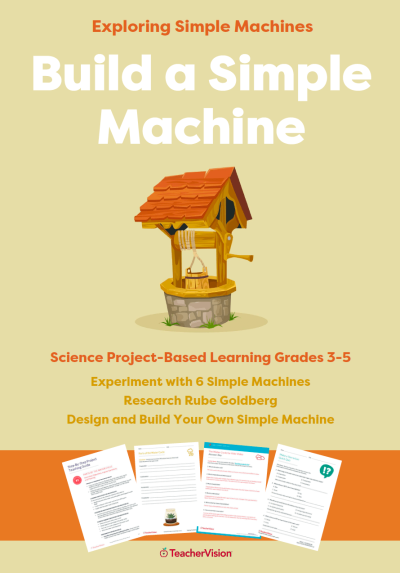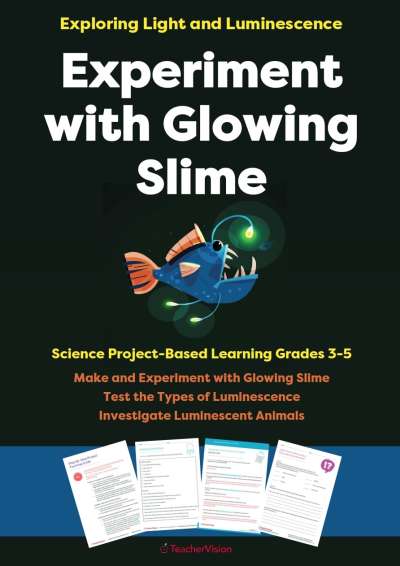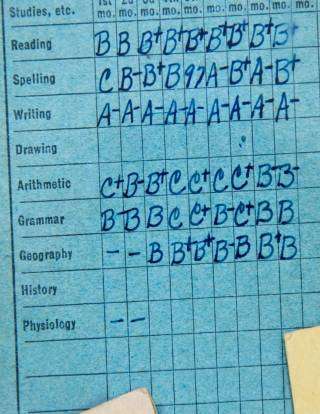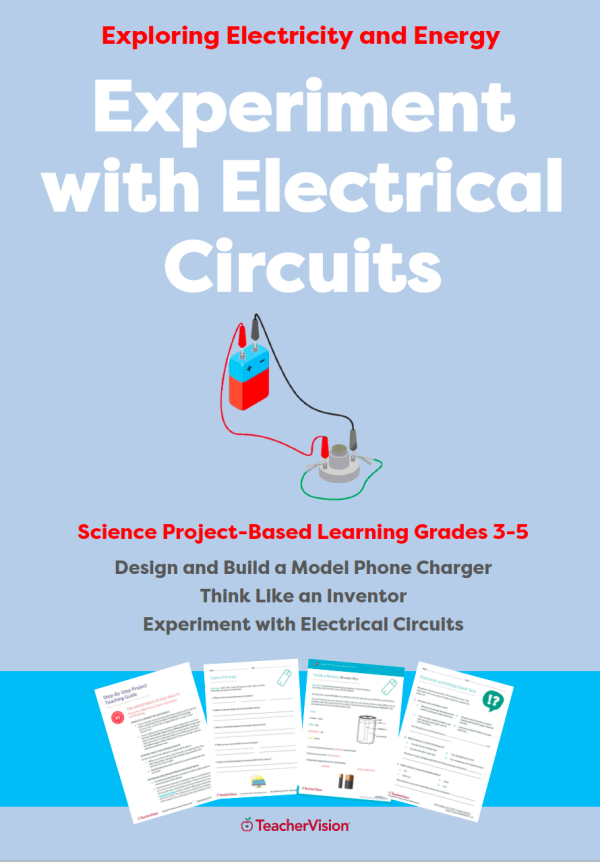
Included with a Premium Membership
Subscribe for instant access to this and every resource on TeacherVision.
A Comprehensive NGSS-Aligned Lesson on Electricity
Research and explore the types of energy, perform hands-on experiments with electrical circuits, learn about and use the inventor's mindset, and design and build a model electricity-free phone charger in this physical science PBL unit.
Your students will learn all about electricity and types of energy in this complete project-based learning unit on electricity and magnetism for grades 3-5 physical science. They'll research types of renewable and non-renewable energy, learn about batteries and experiment with electrical circuits, discover and use the inventor's mindset to solve a design problem, and then design, build, and demonstrate a model of an electricity-free phone charger as they demonstrate their understanding of electricity and magnetism.
What's Inside
Packed with hands-on inquiry-based activities, extensions and enhancements, cross-curricular independent and group work, and engaging and interactive challenges, this 55-page project-based unit comes complete with:
- For the Teacher: A complete electricity and energy Lesson Plan with step-by-step instructions for all activities, teaching tips, assessment guidance, and inquiry questions.
- For Students: A full-color Student Pack complete with all of the printables and instructions students need for the research, experiments and activities - just print (or share) and teach!
A complete, ready-to-teach Teacher Pack that includes:
- Teacher versions of all the student printables with step-by-step annotations and notes for teaching electricity and magnetism;
- Formative and summative assessments, answer keys, and a full project rubric;
- Instructions and guidance for the extension activities and project enhancements;
- Materials and resources lists, links to articles and videos, plus additional resources for lecture and presentation.
What's Included
Lesson Plan - Step-by-Step Project Guide
- Milestone 1: The Importance of Electricity
- Milestone 2: Creative Ways to Charge a Phone
- Milestone 3: Designing an Electricity-Free Phone Charger
- Milestone 4: Building the Phone Charger
- Milestone 5: Charger Demonstrations
Teacher and Student Resources
- Materials Needed for the Projects in this Unit
- Books About Energy and Electricity
- Powering the Planet Answer Key
- A Time Without Power Sample Story
- Energy Video Answer Key
- Types of Energy Answer Key
- Inside a Battery Answer Key
- Electricity and Energy Quick Quiz
- Electricity and Energy Quick Quiz Answer Key
- Electricity and Energy Summative Assessment
- Electricity and Energy Summative Assessment Answer Key
- Electricity and Energy Project Rubric
- You Wouldn’t Want to Live Without Electricity
- Powering the Planet
- A Time Without Power Writing
- Milestone #1 Inquiry Question
- How to Do Good Research
- Electric Spaghetti, Please
- Energy Video
- Exploring Electricity Project Guidelines
- Need for Inventions
- Milestone #2 Inquiry Question
- Types of Energy
- Inside a Battery
- Invent a Charger
- Milestone #3 Inquiry Question
- Emergency Supply Kit
- Design Your Charger
- Milestone #4 Inquiry Question
- Invention Reflection
- Milestone #5 Inquiry Question
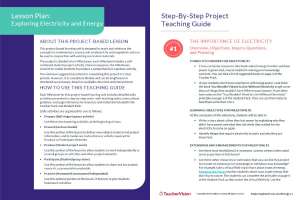
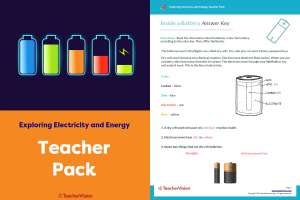
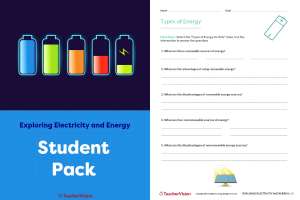
OVERVIEW:
This project-based learning lesson is designed to support and reinforce the concepts taught as part of a lesson on Electricity and Magnetism. It is built around 5 inquiry-based milestones that incorporate cross-curricular hands-on projects, formative and summative assessments, independent and group activities, and extensions.
STUDENT/GROUP OUTPUT:
In the course of this project-based learning unit, students will:
- Research and document the unique characteristics of renewable and non-renewable sources of energy and electricity as background knowledge for the rest of the project;
- Perform hands-on experiments and activities with different types of electrical circuits and power sources to understand the properties of electricity and how it works;
- Explore energy and electricity storage techniques by researching the parts and functions of batteries and reporting their findings to the class;
- Learn about and use the inventor's mindset to solve a problem related to generating energy and electrical current with an alternative source;
- "Show what they know" by designing, building, and demonstrating a model of a phone charger that uses an alternative power source to generate electrical current.
SUGGESTED SUBJECT PREREQUISITES:
Students will acquire necessary background knowledge of electricity and energy as part of this project, and instructional materials for providing that background are included in the Teacher Pack.
SEQUENCE AND PACING
This project-based unit is divided into 5 milestones. The minimum suggested duration for completing this project-based unit is 5 class periods. However, the unit is completely flexible can be lengthened or shortened as necessary or desired, based on available class time and interest level.
TECHNOLOGY RESOURCES (suggested):
- Internet access
STANDARDS ALIGNMENT
These activities support the following NGSS curriculum standards:
- PS3.B: Conservation of Energy and Energy Transfer
- PS3.D: Energy in Chemical Processes and Everyday Life

